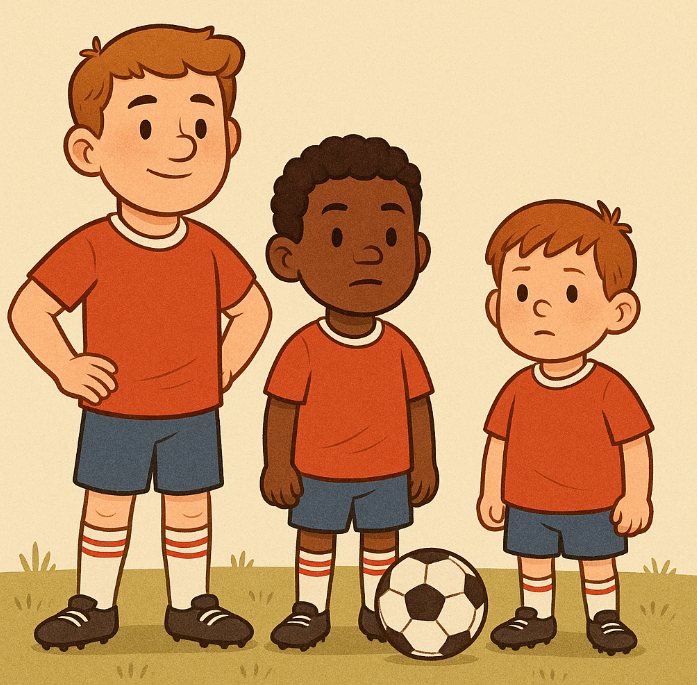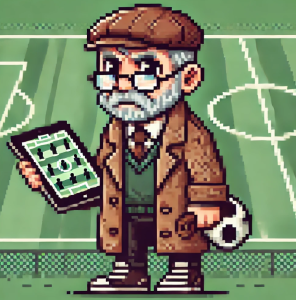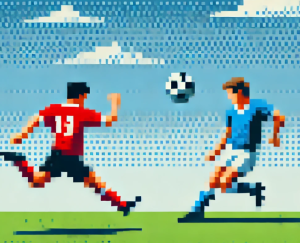
Why Birth Month Still Decides Soccer Futures
Imagine this: two talented kids try out for your U11 squad. One’s born in January, the other in December. Both are passionate, skilled, and driven. But a year’s difference at age 10 is huge. One is stronger, faster, taller. Guess who makes the team?
If you said the January kid, you’re not alone. And that’s the problem.
A new ten-year study from a Scottish soccer academy has put the spotlight back on a stubborn bias that persists: the Relative Age Effect (RAE). It’s the persistent pattern of over-selecting players born earlier in the year and under-representing those born later.
But here’s the kicker: this bias doesn’t actually line up with real physical or athletic advantages, at least not for long. And for clubs with limited resources, like many in Scotland and elsewhere, failing to address this means leaving talent (and money) on the table.
What the Study Found: Relative Age Bias, Still Alive and Kicking
Researchers tracked 512 academy players over 10 years and found:
- Q1 (January–March) players were 3.2 to 5.2 times more likely to be signed than their Q4 (October–December) peers.
- There was no meaningful change in this bias over the decade.
- Physically, players across birth quarters were largely the same—no real difference in sprint speed, weight, or stamina.
- Only one measure, the Counter Movement Jump (CMJ), showed a slight dip for later-born players, but the difference was so small that it likely doesn’t matter in real play.
So what gives? If players are similar in ability, why are late-borns still getting overlooked?
It all boils down to perception and outdated systems.
Why This Matters: The Hidden Cost of Bias
RAE isn’t just a fairness issue, it’s an efficiency one.
In elite clubs like FC Barcelona, RAE is still deeply entrenched. But those clubs can afford to buy talent when they miss it. Smaller clubs don’t have that luxury.
The Scottish academy in the study spends £200–250k per year (~ $270K to 340K USD), a sliver compared to Europe’s top clubs. For them, making the most of every player matters.
Missing a late-born player who matures into a star? That’s a financial and competitive loss.
Turning a Bias Into a Breakthrough: What Clubs Can Do
Here’s the good news: you don’t need a massive budget to fix this. There are low-cost, high-impact strategies you can adopt today:
✅ Rethink Selection Metrics
- Don’t assume older = better. Ask: is this kid just bigger because he’s older, or actually better?
- Use physical maturity assessments, not just age.
✅ Add Visual Cues During Tryouts
- Use numbered bibs that indicate birth quarter. Coaches get a subtle reminder to check their bias.
✅ Play Around with Age Bands
- Let some late-born players “play down” a year.
- Create “future squads” with physically late bloomers who may need time.
✅ Track and Retain Q4 Players
- Keep your best 2–3 Q4 players in each age group—even if they’re not dominating yet.
- They may be tomorrow’s top talent once they catch up physically.
Why This Bias Persists—And Why It Shouldn’t
One myth is that early-born players stay better long-term. But research increasingly shows the opposite. Late-born players, once they develop, may actually have more successful careers. Think of it as the “underdog effect”—they had to fight harder early on, and it pays off later.
That means if your academy is cutting Q4 players too early, you’re not just being unfair—you’re being short-sighted.
Your Turn to Kick It Off ⚽
Think your club might have a relative age problem? Here’s how you can start:
- Check your rosters. What’s the birth month breakdown?
- Ask your coaches. Do they notice physical differences? Or are they assuming?
- Try a trial run. See what happens if you adopt just one of the strategies above.
And let’s hear from you:
- Have you noticed the RAE in your own club?
- What strategies have you tried to level the playing field?
- Would you be willing to keep a late-born player, even if they’re not top of the pack right now?
Drop your thoughts in the comments—or tag us on social to share your experience. Every conversation helps us build smarter, more equitable soccer systems.



